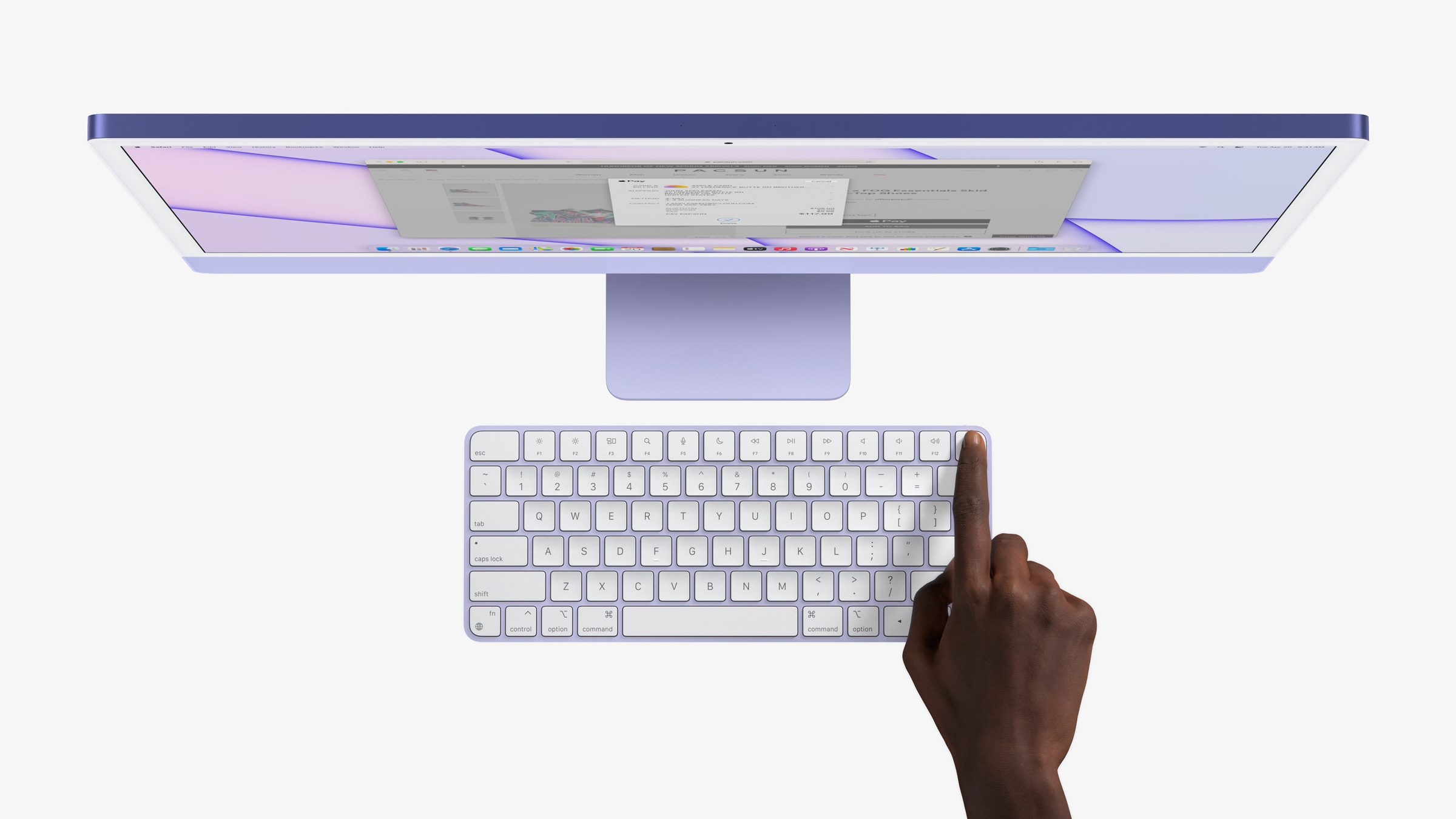I’m excited about the new iPad Pros, but the new 24” iMac took my breath away. I’ve long wanted Apple to return to the vivid colors of past Macs but wasn’t convinced the company would go that direction. Leading up to today’s event, mockups of iMacs in the pale color schemes of the iPhone 12 circulated. Today, however, Apple took the iMac in a wholly different direction with bright, saturated colors on the back of the new computer and paler hues on the front.
The iMac update is about more than color, though. The iMac’s basic design hasn’t changed in a long time, but as Apple explained in its press event today, the M1 chipset allowed it to substantially reduce the iMac’s profile to an 11.5 mm thickness that resembles an iPad on a stand. By comparison, the 12.9” iPad Pro is 6.4mm thick. In fact, the new iMac is so thin, YouTuber Marques Brownlee says it couldn’t fit a headphone jack on the back of the case, so it was added to the side.
The new iMacs are the biggest design departure for an M1 Mac yet. The M1 requires less cooling, which is what enables the new thin profile that reduces the computer’s volume by 50%. The aluminum case comes in seven bright colors for the 8-core GPU model: green, yellow, orange, pink, purple, blue, and silver and houses a thin 24” 4.5K Retina display with 11.3 million pixels, 500 nits of brightness, and more than one billion colors. The 7-core GPU is limited to blue, green, pink, and silver. The display has an anti-reflective coating and supports Apple’s True Tone technology that adjusts color temperatures to fit your surroundings too.
Because of reduced bezels, Apple was able to fit the new display in a case that is close to the size of the old 21” iMac. The woven power cable connects magnetically to the back of the iMac and includes a power brick to which users can attach an Ethernet cable.
Compared to the standard 21.5” iMac, Apple’s says the 8-core CPU, 8-core GPU, and 16-core Neural Engine iMac delivers 85% faster CPU performance, a 2x increase in GPU speed, the ability to edit five 4K video streams or one 8K stream, and up to three times faster machine learning. The new iMac can be configured with up to 2TB of storage on the 8-core GPU model and up to 16GB of unified memory. The iMac also has four USB-C ports, two of which are Thunderbolt ports capable of 40Gbps throughput.
The iMac’s camera has been updated too. The 1080p resolution camera leverages the M1 and Neural Engine to enhance video on the fly, reducing noise and achieving higher dynamic range along with better auto exposure and white balance. There’s also a built-in three microphone array that uses beam-forming technology to improve the clarity of audio calls and recordings.
I’m very curious to hear the sound system built into the iMac’s think display. The six-speaker array includes force canceling woofers and a pair of high-performance tweeters. The result is that the iMac now supports spatial audio when Dolby Atmos video is played.
Apple is pairing the new iMacs with keyboards with the same color aluminum cases. The new keyboards are the first in Apple’s lineup to feature Touch ID, bringing that technology to a desktop machine for the very first time. The keyboard comes in standard and extended sizes and can be paired with new Magic Trackpads and mice that follow the same color scheme as the iMacs. The new Magic Keyboard with Touch ID is included with the 24‑inch iMac and 8‑core GPU and is available as an option for the 7‑core GPU systems.
Rene Ritchie said on Twitter that the keyboards aren’t currently sold separately but will work as Bluetooth keyboards for any Mac. However, Touch ID, will only work with other M1 Macs.
The 24” iMac will be available for ordering on April 30th. The computer starts at $1299 for a 7-core GPU model and $1499 for the 8-core GPU model, with educational buyers receiving a $50 discount on each entry-level machine. Deliveries will begin in the second half of May.
You can follow all of our April event coverage through our April 2021 Event hub, or subscribe to the dedicated RSS feed.






